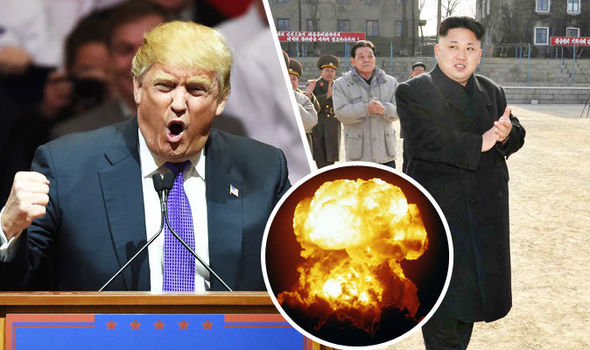Alwaght-North Korean has condemned a US bombing drill on the Korean peninsula, warning that the move could spark a nuclear war.
An editorial published in state newspaper Rodong Sinmun Sunday accused the US of “military provocations” which are raising the threat of nuclear conflict to an extreme level.
“The Korean peninsula is the largest gunpowder area in the world with the highest risk of nuclear war, and is the largest hot spot in the world where there is always a risk of nuclear war. [The US] is surely spreading into a new world war,” the piece reads.
The article also accuses the Trump administration of using the Korean peninsula to distract from the US president’s “serious crisis of power” at home.
The US Air Force sent two B-18 strategic bombers to carry out live-fire tests on a training range in South Korea Friday. Fighter jets from South Korea and Japan also joined in the drill.
The US military said the drill “demonstrated America’s ironclad commitment to the defense of our allies”.
The exercise, which targets mock enemy missile launch sites, came three days after North Korea tested a ballistic missile on July 4, Independence Day in the US.
The United Nations Security Council convened an emergency meeting on the situation while Russia and China have called for a simultaneous freezing of North Korea's missile and nuclear program and large-scale military exercises by the United States and South Korea
North Korea said on Tuesday claimed it had successfully test-launched an intercontinental ballistic missile (ICBM) for the first time, which flew a trajectory that experts said could allow a weapon to hit the US state of Alaska.
Russia disputes US, North Korea claims of ICBM
Meanwhile, Russia has provided evidence to the United Nations indicating that North Korea’s latest missile launch on July 4th tested an intermediate range rocket, despite the US’ insistence that it was an intercontinental ballistic missile.
“A Voronezh-type radar station deployed in the Irkutsk region monitored the launch of the Hwasong-14 medium-range ballistic missile (IRBM) from North Korea, which flew a distance of 510 kilometers (317 miles) in 14 minutes, reaching an altitude of 535 kilometers (332 miles), before landing in the Sea of Japan,” reads a letter from Russia’s UN mission addressed to the UN’s secretary-general and the chairman of the Security Council.
An illustration of the trajectory of the missile and the territory it covered during flight is included in an addition to the letter.
Fierce Debate at UN Security Council
The evidence, compiled by the Russian Defense Ministry, was sent to the UN after a fierce Security Council debate over North Korea’s missile launch, in which the UN’s assistant secretary-general backed the US assessment that the Hwasong-14 missile does, indeed, possess the technical characteristics to be called an ICBM.
Based on North Korea’s claim and the Pentagon’s assessment that the rocket poses a new level of threat to the US and the region, the US ambassador to the UN dedicated the entire UNSC meeting to scrambling together a new set of sanctions to impose on Pyongyang. The Pentagon failed to share its own tracking data, however.
Understanding what type of missile was launched on July 4th launch is crucial to proceeding with a North Korean settlement.
Tensions on the Korean Peninsula have been near boiling point following increased provocations by the US which includes military drills and deployment of warships and submarines in the region.
Pyongyang insists that developing its military defenses including nuclear weapons is important to counter incessant provocations by the US including a possible nuclear aggression.



























